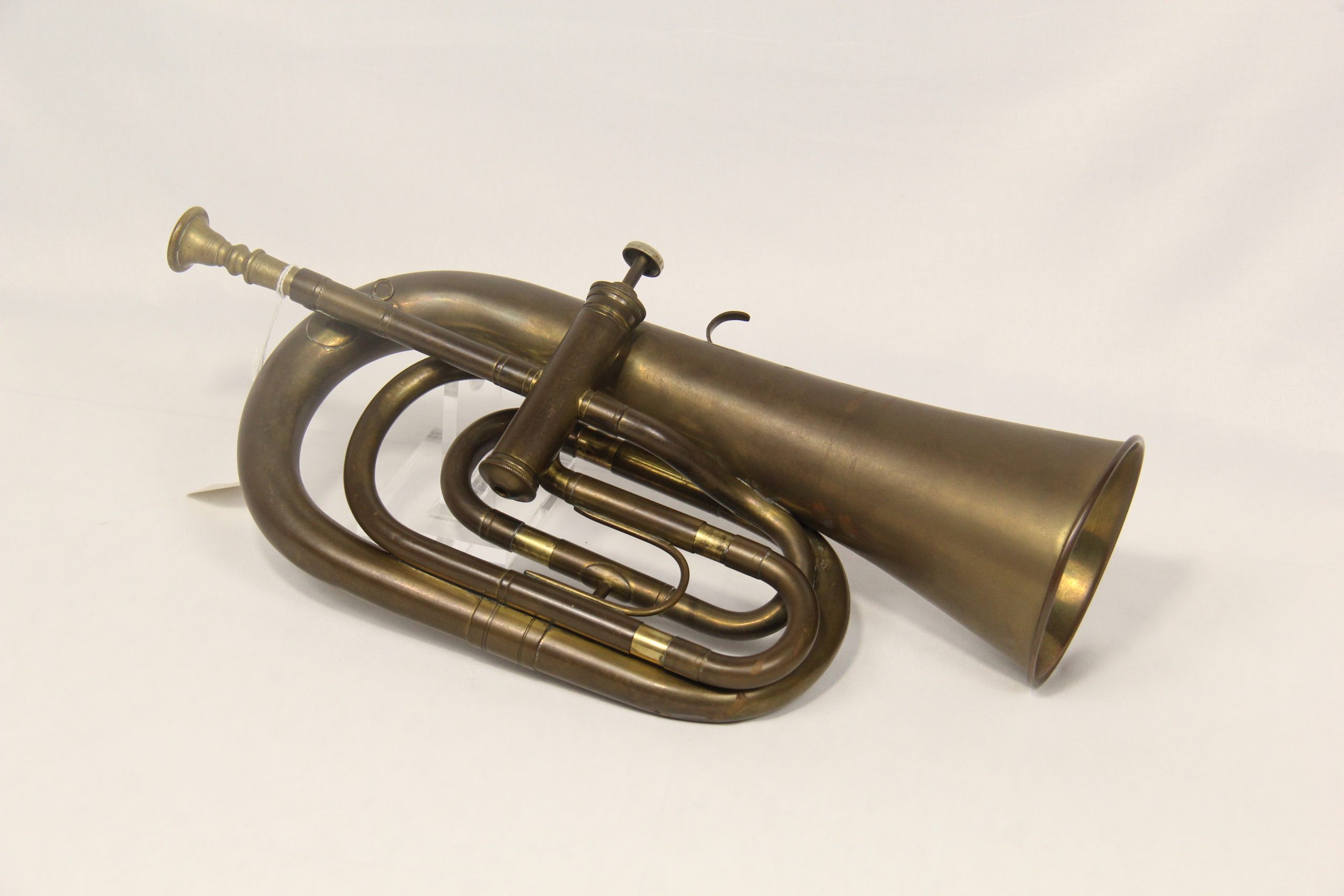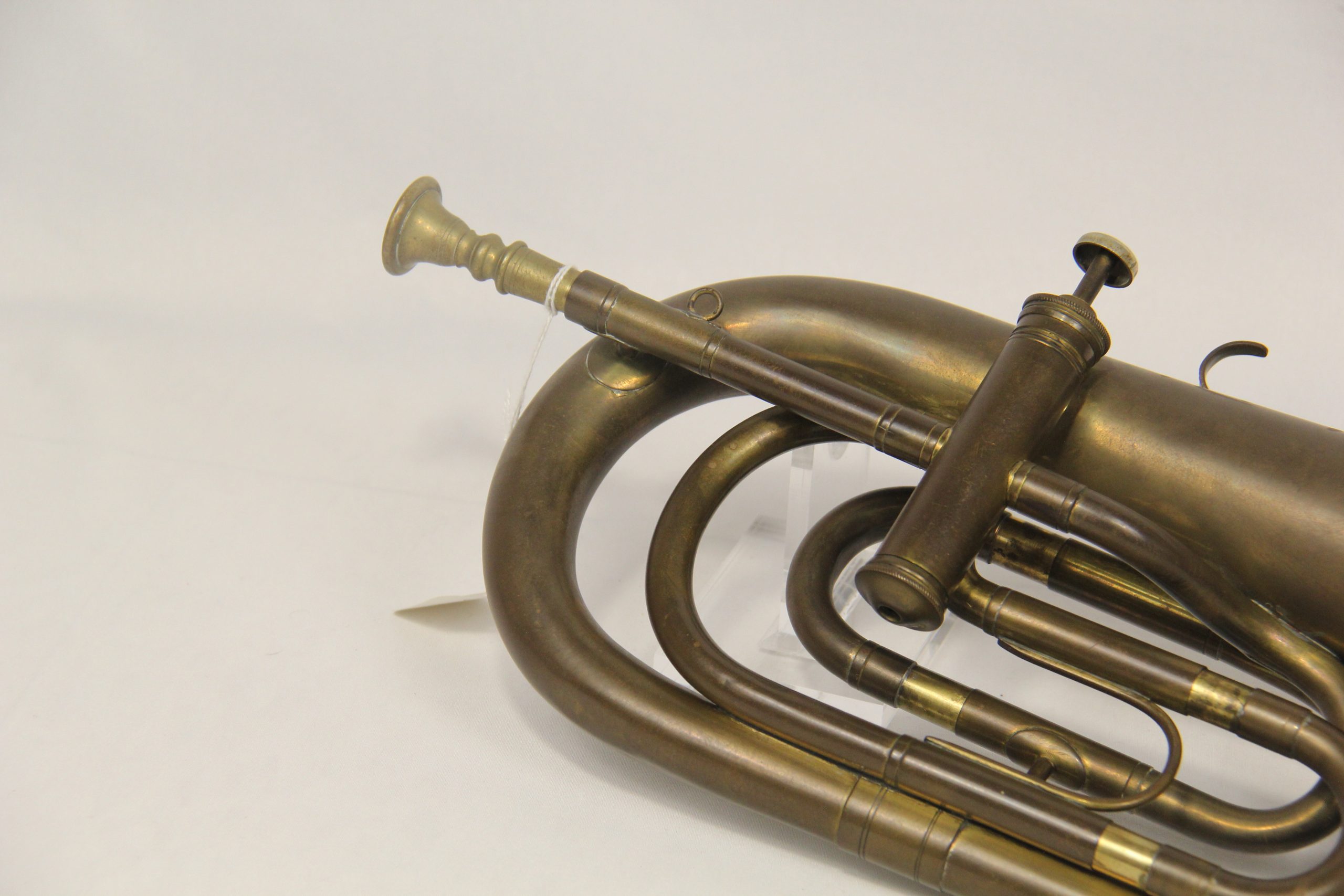Cornet in B-flat
The cornet is sometimes mistakenly considered the valved version of the bugle, although it was derived from the French Cornet de Poste and the Cor de Chasse – another signalling instrument. Keyed and valved bugles are two 19th century variants based on the standard bugle. Joseph Halliday invented the Key Bugle in England in 1817, with his patent design for the Royal Kent Bugle. This bugle was very popular and extensively used until about 1850. Richard Willis, later bandmaster of the United States Military Band at West Point is a notable example of keyed bugle music. Later on, the keyed bugle was replaced with the valved cornet. Often times, modern instruments classified as bugles are valved.
The cornet resembles the trumpet in most ways, but a trumpet has a “cylindrical bore” which resulting in a “bright, piercing sound”, while a cornet has a “continuously conical bore” resulting in a warmer sound [1]. In music, the bore of a wind instrument (including woodwind and brass) is its interior chamber. This defines a flow path through which air travels, which is set into vibration to produce sounds. The shape of the bore has a strong influence on the instrument’s timbre.
This trumpet was likely imported by a distributor who distributed many Italian instruments for use in local, Italian bands.
Luigi Pelitti founded the Pelitti factory in mid-18th century Varese, and the factory was continued by his son Giovanni. Giovanni Pelitti had nine children, of whom at least three dedicated themselves to the making of brass instruments. While initially focused on constructing harpsichord and church organs, the factory later began producing brass instruments.
The Pelitti firm’s global expansion was mainly due to the “entrepreneurial talent of Giuseppe the son” who rapidly expanded exports to the whole world, with warehouses in Buenos-Aires, Lima, and Montevideo [2].

Sources
Uitti, Jake. “What’s the Difference between a Trumpet and a Cornet?” Yamaha Music, August 13, 2021. https://hub.yamaha.com/winds/brass/whats-the-difference-between-a-trumpet-and-a-cornet/#:~:text=A%20trumpet%20has%20a%20cylindrical,and%20even%20more%20conical%20bore.).
- Meucci, Renato. “Pelitti.” Oxford Music Online, 2001. https://doi.org/10.1093/gmo/9781561592630.article.40672.





